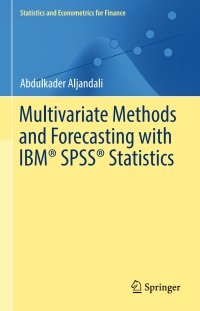Question
Assume that you are nearing graduation and that you have applied for a job with a local bank. As part of the banks evaluation process,
Assume that you are nearing graduation and that you have applied for a job with a local bank. As part of the banks evaluation process, you have been asked to take an examination that covers several financial analysis techniques. The first section of the test addresses time value of money analysis. See how you would do by answering the following questions:
a. Draw cash flow time lines for (1) a $100 lump-sum cash flow at the end of Year 2, (2) an ordinary annuity of $100 per year for three years, (3) an uneven cash flow stream of $50, $100, $75, and $50 at the end of Years 0 through 3.
b. (1) What is the future value of an initial $100 after three years if it is invested in an account paying 10%annual interest?
(2) What is the present value of $100 to be received in three years if the appropriate interest rate is 10%?
c. We sometimes need to find how long it will take a sum of money (or anything else) to grow to some specified amount. For example, if a companys sales are growing at a rate of 20%per year, approximately how long will it take sales to triple?
d. What is the difference between an ordinary annuity and an annuity due? What type of annuity is shown in the following cash flow time line? How would you change it to the other type of annuity?
0 1 2 3
100 100 100
e. (1) What is the future value of a 3-year ordinary annuity of $100 if the appropriate interest rate is 10%?
(2) What is the present value of the annuity?
(3) What would the future and present values be if the annuity were an annuity due?
f. What is the present value of the following uneven cash flow stream? The appropriate interest rate is 10%, compounded annually.
0 1 2 3 4
100 300 300 150
g. What annual interest rate will cause $100 to grow to $125.97 in 3 years?
h. (1) Will the future value be larger or smaller if we compound an initial amount more often than annuallyfor example, every 6 months, or semiannuallyholding the stated interest rate constant? Why?
(2) Define the stated, or quoted, or simple, rate, (rSIMPLE), annual percentage rate (APR), the periodic rate (rPER), and the effective annual rate (rEAR).
(3) What is the effective annual rate for a simple rate of 10%, compounded semiannually? Compounded quarterly? Compounded daily?
(4) What is the future value of $100 after three years under 10%semiannual compounding? Quarterly compounding?
i. Will the effective annual rate ever be equal to the simple (quoted) rate? Explain.
j. (1) What is the value at the end of Year 3 of the following cash flow stream if the quoted interest rate is 10%, compounded semiannually?
0 1 2 3
100 100 100
(2) What is the PV of the same stream?
(3) Is the stream an annuity?
(4) An important rule is that you should never show a simple rate on a time line or use it in calculations unless what condition holds? (Hint: Think of annual compounding, when rSIMPLE = rEAR = rPER.) What would be wrong with your answer to parts (1) and (2) if you used the simple rate 10%rather than the periodic rate rSIMPLE/2 = 10%/2 = 5%?
k. (1) Construct an amortization schedule for a $1,000 loan that has a 10%annual interest rate that is repaid in three equal installments.
(2) What is the annual interest expense for the borrower, and the annual interest income for the lender, during Year 2?
l. Suppose on January 1 you deposit $100 in an account that pays a simple, or quoted, interest rate of 11.33463%, with interest added (compounded) daily. How much will you have in your account on October 1, or after 9 months?
m. Now suppose you leave your money in the bank for 21 months. Thus, on January 1 you deposit $100 in an account that pays a 11.33463%compounded daily. How much will be in your account on October 1 of the following year?
n. Suppose someone offered to sell you a note that calls for a $1,000 payment 15 months from today. The person offers to sell the note for $850. You have $850 in a bank time deposit (savings instrument) that pays a 6.76649%simple rate with daily compounding, which is a 7%effective annual interest rate; and you plan to leave this money in the bank unless you buy the note. The note is not riskythat is, you are sure it will be paid on schedule. Should you buy the note? Check the decision in three ways: (1) by comparing your future value if you buy the note versus leaving your money in the bank, (2) by comparing the PV of the note with your current bank investment, and (3) by comparing the rEAR on the note with that of the bank investment.
o. Suppose the note discussed in part n, above, costs $850, but calls for five quarterly payments of $190 each, with the first payment due in 3 months rather than $1,000 at the end of 15 months. Would it be a good investment?
Step by Step Solution
There are 3 Steps involved in it
Step: 1

Get Instant Access to Expert-Tailored Solutions
See step-by-step solutions with expert insights and AI powered tools for academic success
Step: 2

Step: 3

Ace Your Homework with AI
Get the answers you need in no time with our AI-driven, step-by-step assistance
Get Started


